Car insurance can feel overwhelming, especially when it comes to understanding different types of coverage. Two of the most important options to know are liability and collision coverage. Liability vs Collision coverage isn’t just a technical difference—it’s about protecting yourself, your car, and others in specific ways. Knowing how they work can help you make smarter decisions and avoid costly mistakes. Let’s break it down together so you can feel confident about your insurance choices.
What Is Liability Coverage?
Liability coverage is one of the most basic parts of car insurance. It’s designed to protect you if you are responsible for an accident. This type of insurance pays for damages or injuries that you cause to other people or their property. For example, it can cover medical bills, car repairs, and even legal costs if someone sues you.
Unlike collision coverage, liability insurance doesn’t pay for your own car’s repairs. It’s all about protecting others and keeping you financially safe if you’re at fault. Most states require drivers to carry this coverage. According to the Insurance Information Institute, nearly every U.S. state has minimum liability coverage limits that drivers must meet.
Here’s an example. Imagine you accidentally rear-end another car at a red light. Your liability insurance would pay for the repair costs to the other car and any medical bills if the driver or their passengers were injured. It won’t, however, pay to fix your own vehicle.
Another common situation is hitting a pedestrian or damaging someone’s mailbox. Without liability coverage, you’d be responsible for footing the repair bills or covering the medical expenses on your own.
By having liability coverage, you’re not only following the law but also protecting yourself from potentially huge financial losses. It’s the foundation of any car insurance policy and plays a key role in the liability vs collision comparison.
What Is Collision Coverage?
Collision coverage is a type of car insurance that protects your vehicle. If your car is damaged during an accident—no matter who’s at fault—collision coverage helps pay for the repairs. Unlike liability insurance, this covers your own car, even in cases where you hit an object rather than another vehicle.
One key difference in liability vs collision coverage is that collision coverage is optional. Most states don’t require it by law. However, if you’re financing or leasing your car, your lender will probably insist on it. According to the Insurance Information Institute, the average annual cost of collision coverage in the U.S. is about $381.
Now, let’s look at some scenarios. Imagine you accidentally hit a tree while swerving to avoid an animal. Your collision coverage would help cover the repair costs for your car. Similarly, if you’re involved in a multi-car pileup and your car is damaged, collision insurance would handle your vehicle’s repairs regardless of who caused the accident.
Collision coverage can give you peace of mind, especially if your car is new or has significant value. While it might not be mandatory, it’s an important option to consider, depending on your vehicle and financial situation. It’s one half of the insurance puzzle when comparing liability vs collision coverage.
Key Differences Between Liability and Collision Coverage
When deciding between liability vs collision coverage, it’s crucial to understand how they differ. These differences affect what’s covered, who’s protected, and how much you’ll pay.
Coverage Scope
Liability coverage focuses on others. It pays for damage or injuries you cause to other people, their property, or vehicles. On the other hand, collision coverage is all about your car. It covers your vehicle’s repair costs if it’s damaged, whether the accident is your fault or not.
Responsibility Determination
Liability insurance depends on who’s at fault. If you’re responsible for an accident, your liability coverage kicks in to pay for the other party’s expenses, like car repairs or medical bills. Collision coverage doesn’t require fault determination. It protects your car regardless of who caused the accident, giving you faster access to repair funds.
Cost Differences
Statistics from the National Association of Insurance Commissioners show the average annual premium for liability coverage in the U.S. is around $650, while collision coverage averages $381. Liability can be more expensive since it’s required in nearly all states and covers a wider scope of risks. However, adding collision to your policy increases your overall insurance bill, so it’s important to weigh the costs.
Who the Coverage Benefits
Liability coverage is for the benefit of others. It protects other drivers, pedestrians, and property owners. Without it, you could face lawsuits or out-of-pocket expenses to pay for damages you caused. Collision coverage, however, mainly benefits you. It’s there to cover your vehicle, ensuring you’re not stuck paying thousands for car repairs—even in a no-fault situation.
By understanding these key differences, you can see that liability vs collision coverage isn’t an either-or decision. They serve different purposes and play unique roles in protecting both you and others on the road.
Benefits and Limitations of Each
When comparing liability vs collision coverage, it’s helpful to weigh their pros and cons. Each type of coverage offers its own set of advantages and trade-offs.
Liability Coverage
Benefits
Liability coverage is affordable and essential. On average, it costs less than collision coverage, with an annual premium around $650, according to the National Association of Insurance Commissioners. It also keeps you legally protected in case you’re at fault in an accident. If someone sues you after a collision, liability insurance can cover their medical bills, property damage, and legal expenses. Without this coverage, you could face enormous costs coming out of your own pocket.
Limitations
The downside? Liability coverage doesn’t protect your own vehicle. If your car is damaged in an at-fault accident, liability insurance won’t cover repairs. It also doesn’t pay for injuries you sustain, leaving you vulnerable in cases where additional protection (like medical payments or personal injury protection) isn’t included in your policy.
Collision Coverage
Benefits
Collision coverage focuses on your car. This means your vehicle can get repaired or replaced, even in scenarios where you’re at fault. Have a single-car accident, like hitting a pole or slipping on ice? Collision coverage has you covered. For many drivers, especially those with newer cars, this peace of mind is priceless. On average, it adds about $381 a year to your insurance costs, which may be worth it if you want to avoid paying out-of-pocket for expensive repairs.
Limitations
The main limitation of collision coverage is cost. It’s an optional add-on, which makes it pricier than liability coverage on top of your required insurance. Plus, it doesn’t cover injuries or damage to other people’s property—those are still the responsibility of your liability insurance.
Ultimately, understanding the benefits and limitations of liability vs collision coverage helps you choose the right protection. Depending on your budget, driving habits, and car value, each type of insurance plays a different role in keeping you prepared for accidents.
When Should You Use Each Type of Coverage?
Knowing when to rely on liability vs collision coverage can save you money and help you feel more confident about your choices. Each serves a unique purpose depending on your vehicle, financial situation, and driving habits.
Scenarios Where Liability Coverage Suffices
Liability coverage alone might be enough if your car is older and has a lower market value. For example, if the car isn’t worth more than a few thousand dollars, paying extra for collision coverage might not make financial sense. According to Kelley Blue Book, repair costs can sometimes exceed a car’s value in the case of older vehicles.
Another instance is if you’ve already paid off your car and can afford minor repairs on your own. Plus, if your state only requires liability insurance, this might be the most cost-effective way to meet the legal minimums for driving.
Scenarios Where Collision Coverage Is Necessary
Collision coverage is vital for newer cars or high-value vehicles. If you’re leasing or financing your car, your lender will almost always require you to carry collision insurance. They want to ensure the car is protected until you fully own it.
Another reason to opt for collision coverage is if you drive in areas with higher accident risks. Urban areas, for example, often have more traffic and a higher likelihood of collisions. The National Highway Traffic Safety Administration reports that about 45% of car accidents happen at intersections—something to think about if your daily commute involves high-traffic zones.
Lastly, if you live in a region with unpredictable weather, such as snow or heavy rain, having collision coverage can save you from footing large repair bills caused by accidents like skidding on ice.
Liability vs collision isn’t just about one being better than the other. It’s about understanding your unique circumstances and picking coverage that fits your needs. Balancing risk and cost is key to smart insurance decisions.
How to Choose the Right Coverage for You
Choosing between liability vs collision insurance doesn’t have to feel overwhelming. All it takes is a little thought about your needs, budget, and available resources to make a decision that works for you.
Assessing Personal Needs
Start with your car. How old is it? What’s the value? If your car is brand-new or worth more than a few thousand dollars, collision coverage is probably a smart choice. On the other hand, if your car is older and its value is low, just sticking to liability coverage might save you money. AAA’s research shows that the average cost to repair a car after an accident is around $3,000—so weigh that against the value of your car.
Think about your risk, too. Do you drive daily in heavy traffic or live in an area with frequent bad weather? If so, collision coverage might provide peace of mind.
Budgeting for Insurance
Insurance can take a chunk out of your monthly budget, but it’s worth considering what you can afford now versus what you’d pay in an accident. Liability coverage, while cheaper, could leave you on the hook for hundreds or even thousands in repairs if your car is damaged. On the flip side, collision coverage adds about $31.75 per month on average to your premiums, based on national statistics.
Look at deductibles as well. A higher deductible can lower your premium costs, but make sure it’s an amount you can afford to pay upfront if you file a claim.
Consulting an Insurance Expert
Sometimes it’s best to get a second opinion. Speaking with an insurance expert can help you understand your options and choose what makes the most sense for you. They can walk you through scenarios and explain how your policy works in real-life situations. Questions like, “What’s the best mix of coverage for my car?” or “How can I save while staying protected?” can help you get tailored advice.
At the end of the day, the right coverage depends on your personal situation. Weigh the costs, assess the risks, and don’t hesitate to ask for expert advice. Understanding liability vs collision insurance can mean the difference between being financially prepared and facing unexpected expenses.
Choosing the right car insurance is easier when you know the facts. Liability coverage protects other people and their property when you’re at fault. It’s a legal requirement in most states. Collision coverage focuses on your car, helping cover repair costs even if you’re responsible for the accident.
If your car is older or has a low value, liability coverage might be enough. For newer vehicles or higher-risk driving situations, adding collision coverage can provide peace of mind. It’s all about balancing costs with your personal needs.
Not sure which coverage is right for you? Contact us today. We’ll help you understand liability vs collision coverage and find the best option for your situation. Make the smart choice and protect yourself on the road.







